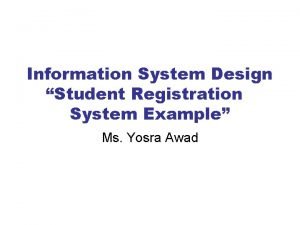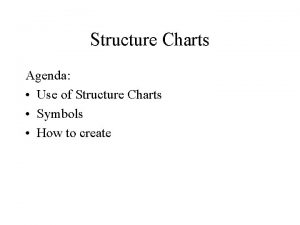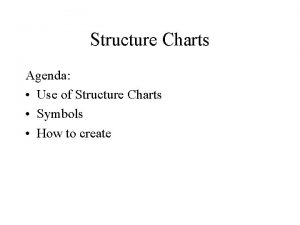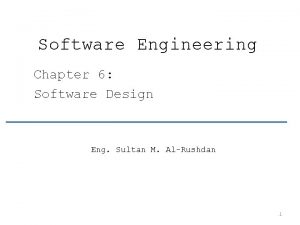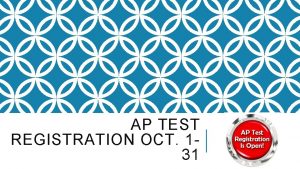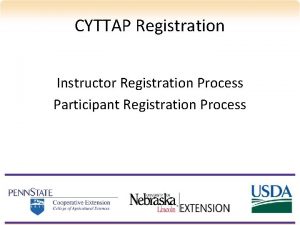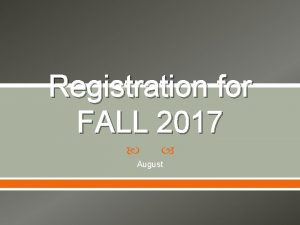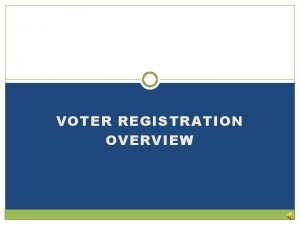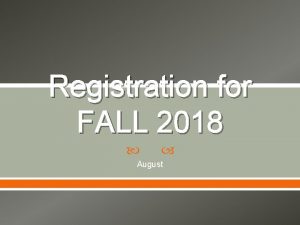1 STRUCTURE CHARTS An Example The Registration System













- Slides: 13

1 STRUCTURE CHARTS An Example: The Registration System

2 registration system 0 conf reg+ conf invoice reg+ invoice read & check registration 1 compute registration 2 produce registration outputs 3

3 registration system 0 conf reg+ conf invoice reg+ invoice read & check registration 1 compute registration 2 produce registration outputs 3

4 read & check registration 1 reg_i error_reason reg_flag read registration 1. 1 check registration 1. 2 error-handler registration 1. 3 error-msg registration CRT

5 registration system 0 conf reg+ conf invoice reg+ invoice read & check registration 1 compute registration 2 produce registration outputs 3

6 compute registration 2 reg+ invoice prepare invoice 2. 1 conf accept registration 2. 2 reg_profile prices reg_info registration db

7 registration system 0 conf reg+ conf invoice reg+ invoice read & check registration 1 compute registration 2 produce registration outputs 3

8 produce registration outputs 3 invoice print invoice 3. 1 conf write confirmation 3. 2 invoice_prt PRT conf_msg CRT

9 0 2 1 1. 2 1. 3 crt input-driven 2. 1 3 2. 2 db center of transformation 3. 1 3. 2 prt crt output-driven

10 Remember during Composition • a module is a unit of execution • invocation between modules is directed • data flows and control flows must follow the invocation hierarchy • data stores, devices, and external systems are typically at the lowest level of your SC • sequence of execution depends on

11 Suggestions for a Good Style • have a balanced system: input => processing => output • think in terms of stepwise-refinement • module encapsulates a single function • limit the use of control flows • reflect the sequence of execution in

12 DFD <===> SC ? ? A Structure Chart is derived from a Data Flow Diagram and is a mapping and refinement of the DFD. ==> Algorithms? / Heuristics?

13 End of Section 3 c coming up: DFDs <==> SCs
 Registration system example
Registration system example Structure chart example
Structure chart example Structure charts symbols
Structure charts symbols Pseudocode examples
Pseudocode examples Hình ảnh bộ gõ cơ thể búng tay
Hình ảnh bộ gõ cơ thể búng tay Slidetodoc
Slidetodoc Bổ thể
Bổ thể Tỉ lệ cơ thể trẻ em
Tỉ lệ cơ thể trẻ em Voi kéo gỗ như thế nào
Voi kéo gỗ như thế nào Chụp phim tư thế worms-breton
Chụp phim tư thế worms-breton Chúa sống lại
Chúa sống lại Môn thể thao bắt đầu bằng từ đua
Môn thể thao bắt đầu bằng từ đua Thế nào là hệ số cao nhất
Thế nào là hệ số cao nhất Các châu lục và đại dương trên thế giới
Các châu lục và đại dương trên thế giới
